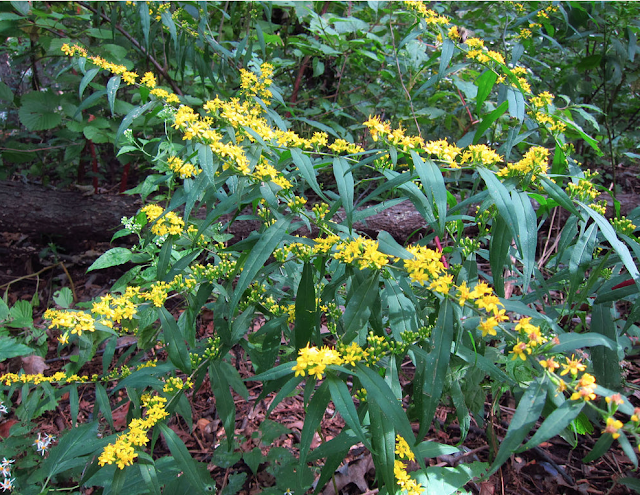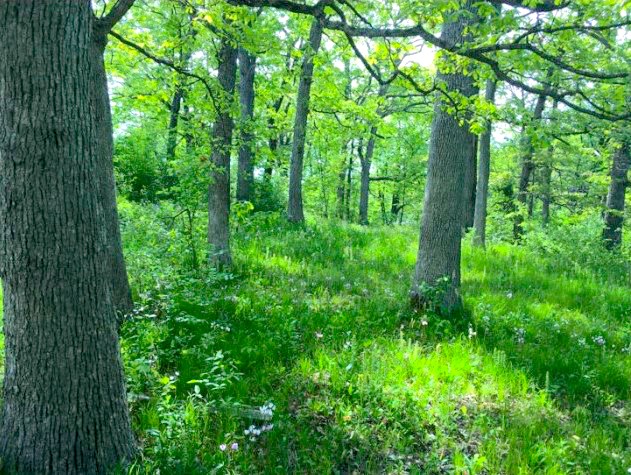... for three hours and nineteen minutes
What I heard and saw from 1:15 to 4:34 pm on November 10, 2022
I’ve often wanted to do this. I’m curious. What happens if I sink quietly into the background?
Usually I don’t have the patience. There’s some important mission calling: gather rare seed … or pull an evil weed patch. But today at 1:15 pm, I sit down quietly, partly to relax and recuperate. An injured knee protests walking. But it limped me into the edge of the wilds carrying a light lawn chair. I brought a book to read and settled in. More such details (and a few photos) at the end. But here's the data:
1:17. Downy woodpecker calls.
1:24. A goldfinch calls, just flying over.
1:40. Red-bellied woodpecker calls.
1:41. Far away, barely visible, a woodpecker flies by, appears to be downy or hairy.
1:42. Robin calls.
1:45. Downy woodpecker calls.
1:46. Ten-point buck deer walks by, perhaps 50 yards away. Eats plant tops as he walks. Oh, now followed by a doe. Oh, now she's followed by another big ten-point buck.
1:56. Red-bellied woodpecker lands 30 feet to my right.
2:01. I notice the doe again, far away, running slowly and peacefully, with buck running slowly after.
2:03. Downy calls twice.
2:05. Junco sings its pretty twitter call in the distance.
2:06. Red-bellied woodpecker lands 15 feet to my left, pokes at tree with bill.
2:09. Yellow jacket hunting in vegetation 2 feet away (the only insect I see today).
2:11. Hairy woodpecker calls behind me, then lands in dead oak 20 feet to my left and stays for a while, pecking.
2:16. Junco sings, this time right behind me.
2:21. Spring peeper calls repeatedly.
2:46. Red-tailed hawk flies over.
2:55. Red bellied woodpecker lands in tree about 100 yards away. (To identify it, I finally have a use for the binoculars I brought.)
3:11. Another large buck walks by, a bit more distant, but apparently heading where the other three headed.
3:24. Unidentified woodpecker tapping somewhere nearby, invisible to me.
3:25. Junco sings again.
3:37. Downy calls twice in the distance.
3:38. Pileated woodpecker calls. Then lands on tree in distance. I don’t see it fly away.
3:39. Two crows fly over, silently.
3:42. Another pileated woodpecker calls, this time behind me.
3:43. White-breasted nuthatch calls.
3:55. Gray squirrel. Seems curious? Comes to within 6 feet. But perhaps just relaxed and on the way to somewhere: it is traveling on the easy highway of downed logs. It does stop and study me a couple of times.
4:08 Red-bellied woodpecker calls.
4:34. Official sunset – and official closing time for the preserve parking lot. Time for me to go.
What and Why
I’m resting up because I have important work to do on Saturday. Interviewing six candidates for the Field Rep job that Friends of Illinois Nature Preserves hopes to fill. The interview is with six finalist candidates – during exploratory hikes through two needy preserves. I want to be in good enough shape to walk.
High temperature of 75° today – scandalously warm for this time of year but certainly pleasant, if I forget about what that warmth implies. Perhaps the unusual warmth inspired the junco to sing a song more typical of spring - and inspired those late-singing frogs.
The book I read is An Immense World by Ed Yong. By mistake. I grabbed the wrong book. Meant to read The Invention of Nature: Alexander von Humboldt’s New World by Andrea Wulf. But they’re both good.
My time is divided this way: I read a few paragraphs wearing my close-up glasses. Then change to distance glasses and look around. Then change back and read more. So far as animals are concerned, I see rather few in these three hours and nineteen minutes: fourteen individual animals of nine species (one mammal, one insect, and seven bird species). In contrast to my glasses-needing eyes, my ears function the whole time. Since I’m partly relaxing, I record only the highlights. The nineteen animal calls (from eleven species … ten birds … and one frog) – if I recorded every little cheep – would add up to three or four times that many. I record just the first two or three from each species – and a few other repeats when I feel like it, mostly when I’m in the mood to put the book down. The most frequent calls are from downies, red-bellies, peepers, and goldfinches. For appreciating birds, I strongly recommend learning to “bird by ear.” Thanks to the sounds, we can feel wide diversity all around us whenever we walk or read outside or gather seeds or whatever.
Today I’m less aware of vegetation. Plants don’t wander by or fill my ears. But I do jot down what’s with me where I sit – toward the top of a slight slope. The herb vegetation close by includes: Joe Pye weed. Virginia rye grass. Forked aster. Blue-stemmed goldenrod. Tall goldenrod. Wood reed. Sweet black-eyed Susan. Golden Alexanders. Hairy aster. And bottle-brush grass. It’s a young restoration, with conservative species slowly increasing.
The few leaves remaining on the trees fall continually the whole time. Tree species at this spot are mostly red oaks with some hickories and basswood. All are fairly young pole trees. The old trees in this area are more meaningful: bur, white, and swamp white oak – not the skinny pole trees of fire-starved woodland – but with large, spreading limbs. The rare, natural, biodiversity-filled oak woodland we’re working to restore here will someday have these stately trees back in the driver’s seat. Well, I suppose, despite the oak’s “keystone” status, I should credit the grasses and flowers and animals and fire also with being in the driver’s seat.
Seasonality of sounds
It impressed me greatly how sparse the sounds were. Minutes would go by without a peep.
Summer listening is so very different. Insects and especially birds whoop it up mightily. At this spot, it would have been vastly more work (more fun?) to write them down. Three hours would have required many pages. The indigo buntings would be singing multiple times per minute, as would the red-eyed vireos and wood pewees. Beyond the four resident woodpeckers I mostly heard today, I'd be hearing flickers and red-headed woodpeckers along with great crested flycatchers, scarlet tanagers, wood ducks, soras, and others. I'd also be hearing blue jays and chickadees, which have not headed for the Amazon, but do mostly spend their winter time around the bird feeders of nearby suburbs.
Birdwise, most of this ecosystem spends the winter by the Gulf of Mexico or in Central America or the Amazon. Rich symphonies of katydids, crickets, cicadas, grasshoppers, and humming bees retreat into cocoons, hibernation, or eggs, silent now. Active winter inhabitants include a few warmer-blooded birds, coyotes, deer, squirrels, humans, and a few more. But for the richness of this ecosystem, there's a rhythm, and we're now in a phase that in many ways is analogous to sleep. It's good, wonderful, and part of what makes temperate ecosystems as productive as they are. Partially suspended animation - and I like it.
The scene is nothing special. Just Somme Woods from where I sat, read, listened, and watched. The diverse plants named above are in this photo, if not shown very clearly.
Downy woodpecker – its calls are the commonest sound in this woods in winter. A single syllable. Sibley’s bird guide has it as “a short, gentle, flat pik” (as opposed to the hairy woodpecker’s “peek … sharper, stronger, and higher than Downy.” Telling them apart takes some practice. There’s also a Somme post about Love Among The Downies. Photo credit: Kelly Colgan-Azar
Blue-stemmed goldenrod. What it looked like in bloom.
Being in touch with wildflowers in winter guise is a bit like being in touch with birds by sound only. Your mind fills in the color.
The impressive Pileated - a dramatic crow-sized woodpecker. For our first thirty years, we never saw a single pileated woodpecker in Somme Woods. An individual showed up in 2019 – possibly in response to good restoration work. Photo-credit: r/birding.
The pileated also has a bit-part role in our Big Bird Year post.
In 2022 for the first time we started seeing a pair of pileateds. John Paterson observed them going in and out of a nest hole. But we never saw chicks. Some day? We can’t deny that we feel honored by their glorious presence.
Sibley describes the call of the pileated as “a loud, deep, resonant kuk.” Really? How much help is that?!
A great aid to learning bird calls is the new Cornell BirdNET app. You just turn it on when you hear a bird calling, and it tells you the species. Fun and truly educational. Forget kuk.
We Somme stewards like to share what we're learning and invite everyone to be a human member of this ecological community. For volunteer dates check out our Facebook page. We share on the Internet and in person. More and more of us being in touch with nature is good for people and for the planet.
Acknowledgement
Thanks to Eriko Kojima and Kathy Garness for helpful proofing and edits.


































